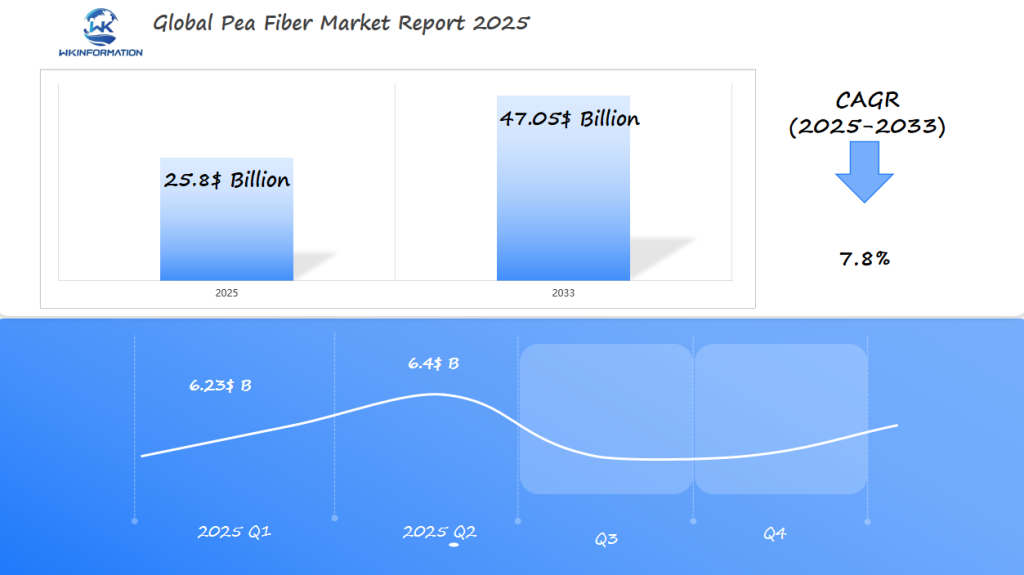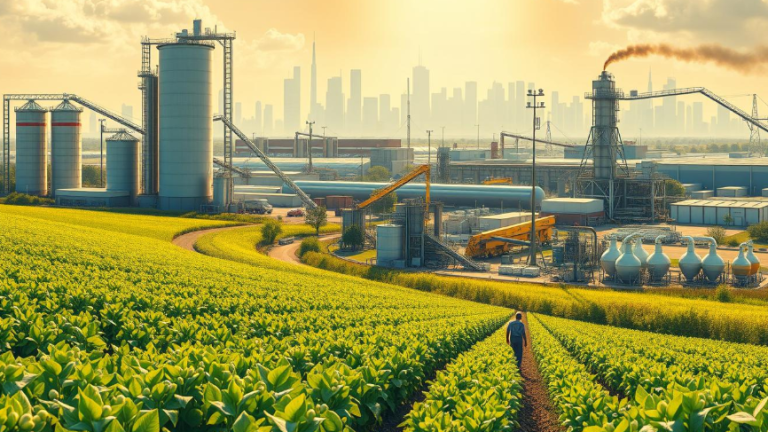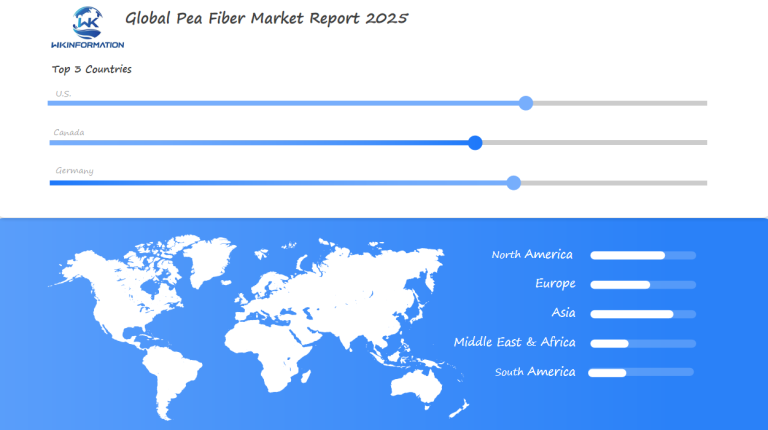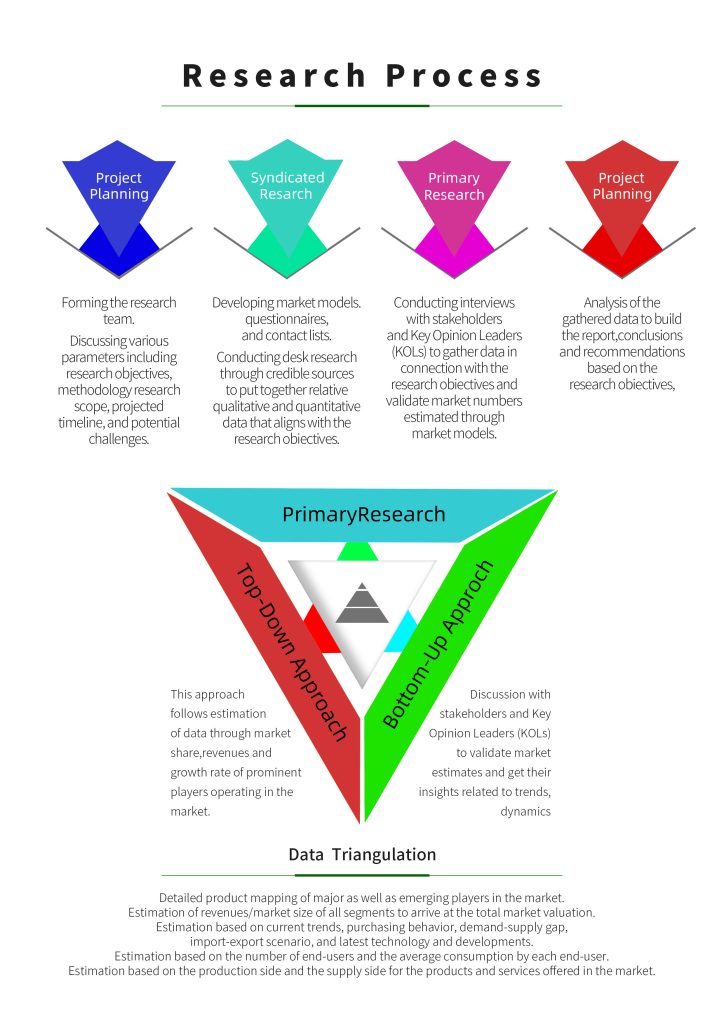Pea Fiber Market Set to Hit $25.8 Billion by 2025: Growing Demand in the U.S., Canada, and Germany
Explore the comprehensive analysis of the global Pea Fiber Market, projected to reach $25.8 billion by 2025. Discover key trends driving growth, including rising demand for plant-based protein, fiber-rich foods, and sustainable agriculture practices. Learn about market dynamics in the U.S., Canada, and Germany, regulatory challenges, geopolitical impacts on trade, and innovations in pea fiber extraction and applications across food, supplements, and animal feed sectors. Stay informed on future prospects and industry insights shaping the pea fiber value chain.
- Last Updated:
Pea Fiber Market in Q1 and Q2 of 2025
The Pea Fiber market is forecast to reach $25.8 billion in 2025, driven by a robust CAGR of 7.8% through 2033. Estimated Q1 sales are around $6.23 billion, growing to $6.4 billion in Q2. The surge in plant-based nutrition, clean-label trends, and sustainable food sourcing has fueled demand globally. The U.S. is a top consumer, with pea fiber increasingly used in meat alternatives, baked goods, and gut-health products. Canada dominates production, benefiting from vast pulse crop acreage and processing infrastructure. Germany drives innovation in fiber enrichment and low-FODMAP applications for functional foods. Texture improvement, water-binding capabilities, and gluten-free applications are key factors behind product expansion.

Key Takeaways
- The global Pea Fiber Market is projected to hit $25.8 billion by 2025.
- Growing demand for plant-based protein is a key driver.
- The U.S., Canada, and Germany are leading the market growth.
- Increasing health consciousness is fueling demand for fiber-rich products.
- Opportunities abound for manufacturers and suppliers in the pea-based product segment.
Upstream and Downstream Industry Chain Analysis of Pea Fiber
Analyzing the pea fiber industry chain reveals key insights into its operations. The industry chain encompasses various stages, from pea cultivation to the production of pea fiber products.
The upstream segment of the industry chain involves pea farmers and suppliers who cultivate and provide peas for processing. Sustainable agricultural practices are crucial in this stage to ensure high-quality peas.
Understanding the industry chain
The industry chain of pea fiber is complex, involving several key players. Understanding this chain is essential for identifying opportunities and challenges in the market.
The process begins with pea cultivation, followed by processing into various products, including pea fiber. Efficient processing techniques are vital for producing high-quality pea fiber.
Key players in the industry
Several companies specialize in pea fiber production and sustainable agriculture practices. These key players drive innovation and growth in the industry.
| Company | Specialization | Contribution |
| Roquette | Pea fiber production | Innovative processing techniques |
| Cargill | Sustainable agriculture | Promoting eco-friendly practices |
| Ingredion | Pea protein and fiber | Developing value-added products |
The downstream segment involves manufacturers who produce final products using pea fiber, such as food and beverages, dietary supplements, and animal feed. Market trends and consumer demand significantly influence this segment.
By examining the industry chain, stakeholders can better understand the dynamics of the pea fiber market and make informed decisions.
Trends in plant-based protein, fiber-rich food products, and sustainable agriculture
The trend towards plant-based protein and fiber-rich food products is gaining momentum globally. Consumers are increasingly seeking out products that are not only high in protein and fiber but also align with their values on sustainability.
Growing demand for plant-based protein
The demand for plant-based protein is on the rise due to the growing adoption of vegan and vegetarian diets. Plant-based protein sources such as pea protein are becoming increasingly popular in food products, from protein powders to meat alternatives.
Manufacturers are responding by developing innovative products that cater to these demands. For instance, companies are incorporating pea fiber into their products to enhance nutritional value.
Fiber-rich food products
Fiber-rich food products are also gaining traction as consumers become more aware of the health benefits of dietary fiber. Fiber-rich diets are associated with various health benefits, including improved digestive health and reduced risk of chronic diseases.
The following table highlights some of the key fiber-rich food products that are currently trending:
| Product | Fiber Content | Health Benefits |
| Pea Fiber Enriched Bread | High in Dietary Fiber | Improves Digestive Health |
| Fiber-Rich Granola | Rich in Soluble Fiber | Helps Lower Cholesterol |
| Vegan Protein Bars | Contains Both Fiber and Protein | Supports Muscle Health and Satiety |
Sustainable agriculture practices are also becoming more prominent, with companies prioritizing environmentally friendly methods to produce these fiber-rich and protein-rich products.
As the demand for plant-based protein and fiber-rich food products continues to grow, manufacturers are likely to invest more in sustainable agriculture practices and innovative product development.
Regulatory challenges surrounding food safety, labeling, and dietary standards
Regulatory challenges are a major consideration in the burgeoning Pea Fiber Market. As the demand for pea fiber products grows, companies must navigate a complex landscape of regulations that vary by country and region. These regulations often encompass aspects such as food safety, labeling requirements, and dietary standards.
The Pea Fiber Market is experiencing significant growth, but with this growth comes the responsibility to comply with various regulatory standards.
Food Safety Regulations
Food safety regulations are a critical part of the rules that control the Pea Fiber Market. Companies must follow strict guidelines to make sure their products are safe to eat. For example, in the United States, the FDA has rules about how food products, including those with pea fiber, should be made, processed, and labeled.
Key aspects of food safety regulations include:
- Good Manufacturing Practices (GMPs)
- Hazard Analysis and Critical Control Points (HACCP)
- Compliance with food safety standards for ingredients and finished products
Labeling and Dietary Standards
Besides food safety regulations, companies in the Pea Fiber Market also need to follow labeling and dietary standards. Accurate labeling is important for letting consumers know about the nutritional content and ingredients of pea fiber products. On the other hand, dietary standards give guidelines on how to make health-related claims about these products.
Following labeling and dietary standards is crucial for avoiding problems with regulators and keeping consumer trust. For instance, in the European Union, the EFSA controls health claims on food labels, making sure that any claims made about pea fiber products are backed by scientific evidence.
By knowing and following these regulatory challenges, businesses in the Pea Fiber Market can make sure their products meet the required standards, creating a safe and trustworthy marketplace for consumers.

Geopolitical influence on international trade policies for plant-based ingredients
International trade policies, shaped by geopolitical events, play a crucial role in the pea fiber industry. The global pea fiber market is subject to various geopolitical influences that impact trade policies, affecting the supply chain and competitiveness of companies.
Impact of Trade Policies on Pea Fiber Trade
Trade policies, including tariffs and trade agreements, significantly affect the global pea fiber trade. For instance, changes in tariffs can alter the cost competitiveness of pea fiber exports from major producing countries like Canada.
Tariffs and Trade Agreements
The imposition of tariffs can increase the cost of pea fiber imports, making it less competitive in the global market. Conversely, favorable trade agreements can reduce or eliminate tariffs, enhancing the competitiveness of pea fiber exports.
Opportunities for Growth
Despite the challenges posed by geopolitical influences, there are opportunities for growth in the pea fiber market. Companies can capitalize on these opportunities by adapting to changing trade policies and exploring new markets.
- Diversifying supply chains to reduce dependence on specific markets.
- Investing in market research to identify emerging trends and opportunities.
- Developing strategic partnerships with suppliers and buyers to enhance market access.
| Impact of Trade Policies Opportunities for Growth North America | Tariffs on imports from certain countries | Increasing demand for plant-based products |
| Europe | Favorable trade agreements for pea fiber exports | Growing demand for sustainable and healthy food options |
| Asia | Changing tariffs and trade policies | Rising demand for functionalfoodingredients |
Type segmentation: yellow pea fiber, green pea fiber, and pea hull fiber
Understanding the different types of pea fiber, including yellow, green, and pea hull fiber, is crucial for market growth. The Pea Fiber Market is segmented into various types, each with its unique characteristics and applications.
Characteristics of different types of pea fiber
Yellow pea fiber is known for its high fiber content and is often used in food products for its nutritional benefits. Green pea fiber, on the other hand, is rich in antioxidants and has a milder flavor, making it suitable for a variety of culinary applications. Pea hull fiber is highly concentrated and is used in dietary supplements due to its high fiber content.
Applications of each type
Yellow pea fiber is commonly used in baked goods and cereals due to its high fiber content. The use of yellow pea fiber in baked goods not only enhances nutritional value but also improves texture, says a leading food technologist. Green pea fiber is often used in soups and sauces because of its mild flavor and high nutritional value.
Pea hull fiber, due to its concentrated fiber content, is frequently used in dietary supplements to support digestive health.
The diverse applications of these pea fiber types highlight their importance in the food and dietary supplement industries. Manufacturers can capitalize on these trends by developing products that cater to specific consumer needs.
Application segmentation: food and beverages, dietary supplements, and animal feed
Pea fiber’s versatility is evident in its multiple applications, ranging from food and beverages to dietary supplements and animal feed. This multifaceted ingredient is transforming various industries with its nutritional benefits and functional properties.
Use of Pea Fiber in Food and Beverages
In the food and beverages sector, pea fiber is used to enhance texture and nutrition. It is a popular ingredient in products such as baked goods, cereals, and snack bars due to its high fiber content and ability to improve digestive health.
Nutritional Benefits
Pea fiber is rich in dietary fiber, making it an excellent ingredient for promoting satiety and supporting healthy blood sugar levels. Its nutritional profile also includes being low in calories and having a positive impact on gut health.
Pea Fiber Applications
| Application Benefits Examples Food and Beverages | Enhanced texture, improved nutrition | Baked goods, cereals, snack bars |
| Dietary Supplements | Promotes digestive health, supports immune function | Capsules, powders |
| Animal Feed | Nutritional benefits, promotes healthy digestion | Livestock feed |
In dietary supplements, pea fiber is valued for its health benefits, including promoting regular bowel movements and supporting immune function. It is often used in capsule or powder form to provide an additional fiber boost.
In animal feed, pea fiber serves as a nutritious ingredient, providing essential fiber and promoting healthy digestion in livestock. Its use can lead to improved animal health and productivity.
Global growth in vegan and gluten-free diets driving fiber ingredient demand
As consumers increasingly adopt vegan and gluten-free diets, the demand for fiber ingredients like pea fiber is experiencing substantial growth. This trend is driven by health-conscious consumers seeking products that align with their dietary preferences and requirements.
Rising demand for vegan and gluten-free products
The shift towards vegan and gluten-free lifestyles is not just a trend but a significant movement influencing various sectors, including food and beverages, dietary supplements, and animal feed. Manufacturers are responding by developing products that cater to these dietary needs, with pea fiber being a key ingredient due to its nutritional benefits.
Some of the key factors driving this demand include:
- Increasing awareness of the health benefits associated with vegan and gluten-free diets
- Growing prevalence of gluten intolerance and sensitivity
- Rise in veganism as a lifestyle choice, driven by ethical, environmental, and health considerations
Impact on the Pea Fiber Market
The Pea Fiber Market is poised to benefit significantly from the growing demand for vegan and gluten-free products. Companies that offer high-quality pea fiber products are likely to see increased demand as manufacturers look for reliable suppliers of fiber ingredients.
“The demand for plant-based ingredients is on the rise, driven by consumer preferences for healthier and more sustainable options. Pea fiber, with its high fiber content and versatility, is well-positioned to meet this demand.”
The growth in vegan and gluten-free diets is not only driving the demand for pea fiber but also influencing the development of new products and applications across various industries.

U.S. Market Focus on Plant-Based Food Innovations and Functional Ingredients
The U.S. food industry is undergoing a significant change, with plant-based innovations and functional ingredients taking the lead. This change is being driven by consumer demand for healthier, sustainable, and environmentally friendly food choices.
Innovations in Plant-Based Foods
The U.S. market is seeing a rise in plant-based food innovations, with companies creating new products that include pea fiber, an important functional ingredient. These innovations are driven by consumer preferences for healthier and more sustainable food choices.
Some of the main trends in plant-based food innovations are:
- The development of plant-based meat alternatives
- The creation of dairy-free products
- The introduction of baked goods that use pea fiber for added nutrition and functionality
Functional Ingredients in the U.S. Market
Functional ingredients, like pea fiber, are becoming more popular in the U.S. market because of their nutritional benefits and versatility in food applications. Pea fiber is used in various products such as baked goods, beverages, and dietary supplements to improve texture, support digestive health, and boost fiber content.
The demand for functional ingredients is driven by consumer awareness of the health benefits associated with these ingredients and the increasing trend towards clean label and sustainable food products.
With its strong agricultural sector, Canada is well-positioned to take advantage of the growing trend towards pea protein and fiber-rich products worldwide. The country’s pea production is known for its quality, making Canada an attractive supplier for both domestic and international markets.
Overview of Canada's Pea Protein and Fiber Industry
The Canadian pea protein and fiber industry has seen significant growth in recent years, driven by the increasing demand for plant-based protein and fiber-rich foods. This growth is supported by Canada’s advanced agricultural practices and its ability to produce high-quality peas.
Key factors contributing to this growth include:
- High-quality pea production
- Advanced processing technologies
- Favorable trade policies
- Growing consumer awareness of plant-based diets
Global Market Expansion
Canadian companies are expanding their presence in the global market by leveraging trade agreements and investing in marketing efforts to promote Canadian pea protein and fiber products. This expansion is expected to continue as demand for plant-based ingredients grows globally.
The global market expansion is driven by:
- Increasing demand for vegan and gluten-free products
- Rising awareness of the health benefits of pea protein and fiber
- Growing demand from emerging markets
As Canada continues to expand its pea protein and fiber industry, it is poised to become a leading supplier in the global market, capitalizing on the trend towards healthier, more sustainable food options.
Germany’s increasing demand for plant-based, high-fiber foods
As health trends continue to shape consumer preferences, Germany is experiencing an unprecedented increase in the demand for plant-based foods rich in fiber. This shift is largely driven by a growing awareness of the health benefits associated with a diet high in fiber and low in processed ingredients.
German Market Trends
The trend towards plant-based eating in Germany is not just a fad; it’s a significant shift in consumer behavior. According to recent market research, the demand for plant-based products in Germany has seen a substantial increase over the past few years.
This growth is attributed to a combination of factors, including rising health consciousness, environmental concerns, and the influence of social media on dietary choices.
“The plant-based market in Germany is booming, with consumers increasingly seeking out products that are not only good for their health but also for the planet.” – Source: German Food Association
Opportunities for Pea Fiber Suppliers
Pea fiber suppliers are poised to capitalize on this trend by providing high-quality, functional ingredients that meet the growing demand for plant-based, high-fiber foods.
- Developing innovative products that incorporate pea fiber
- Enhancing supply chain efficiency to meet growing demand
- Collaborating with food manufacturers to create new plant-based products
The potential for growth in the German market is significant, with opportunities for pea fiber suppliers to establish themselves as key players in the industry.
Future development in pea fiber extraction and value-added products
The future of the pea fiber market is set for significant growth, driven by advancements in extraction technologies and the development of value-added products. As the industry continues to evolve, innovations in pea fiber extraction are expected to play a crucial role in shaping the market’s future.
Advances in Pea Fiber Extraction
Recent advancements in extraction technologies have improved the efficiency and quality of pea fiber production. Techniques such as enzymatic extraction and mechanical separation are being refined to produce higher-quality pea fiber with enhanced functional properties.
These advancements are not only improving the yield and purity of pea fiber but also reducing production costs, making pea fiber more competitive in the market. As a result, manufacturers are able to offer a wider range of pea fiber products tailored to specific applications.
Value-Added Products
The development of value-added products is a significant trend in the pea fiber market. By leveraging the nutritional and functional benefits of pea fiber, manufacturers are creating innovative products that cater to the growing demand for health-conscious and sustainable food options.
Value-added pea fiber products are being used in a variety of applications, including food and beverages, dietary supplements, and animal feed. These products not only enhance the nutritional profile of the final product but also provide functional benefits such as improved texture and stability.
The creation of value-added products is expected to drive growth in the pea fiber market, as consumers increasingly seek out products that offer both nutritional value and sustainability.
Key competitors in the pea fiber production market
The pea fiber production market features several key competitors known for their specialization and contributions to innovation, sustainable agriculture, and product development.
Key Players:
- Roquette Frères – France
- AGT Food and Ingredients – Canada
- Ingredion Incorporated – United States
- Cosucra Groupe Warcoing SA – Belgium
- Emsland Group – Germany
- Vestkorn Milling AS – Norway
- PURIS – United States
- AM Nutrition – Norway
- Shandong Jianyuan Foods Co., Ltd. – China
- Yantai Oriental Protein Tech Co., Ltd. – China
Overall
| Report Metric | Details |
|---|---|
| Report Name | Global Pea Fiber Market Report |
| Base Year | 2024 |
| Segment by Type | ·Yellow Pea Fiber
·Green Pea Fiber ·Pea Hull Fiber |
| Segment by Application | ·Food and Beverages
·Dietary Supplements ·Animal Feed |
| Geographies Covered | ·North America (United States, Canada)
·Europe (Germany, France, UK, Italy, Russia) ·Asia-Pacific (China, Japan, South Korea, Taiwan) ·Southeast Asia (India) ·Latin America (Mexico, Brazil) |
| Forecast units | USD million in value |
| Report coverage | Revenue and volume forecast, company share, competitive landscape, growth factors and trends |
The Pea Fiber Market is growing significantly, driven by the increasing demand for plant-based protein and fiber-rich food products. As consumers become more health-conscious and environmentally aware, the market is expected to expand even further.
The global Pea Fiber Market is projected to reach $25.8 billion by 2025, with the U.S., Canada, and Germany leading the way. Companies that adapt to changing consumer preferences and regulatory requirements will be well-positioned for success in this evolving market outlook.
As the market continues to grow, innovations in pea fiber extraction and value-added products will play a crucial role in shaping the industry’s future. The rising demand for vegan and gluten-free products further underscores the potential of the Pea Fiber Market.
Global Pea Fiber Market Report (Can Read by Free sample) – Table of Contents
Chapter 1: Pea Fiber Market Analysis Overview
- Competitive Forces Analysis (Porter’s Five Forces)
- Strategic Growth Assessment (Ansoff Matrix)
- Industry Value Chain Insights
- Regional Trends and Key Market Drivers
- Pea Fiber Market Segmentation Overview
Chapter 2: Competitive Landscape
- Global Pea Fiber Players and Regional Insights
-
- Key Players and Market Share Analysis
- Sales Trends of Leading Companies
- Year-on-Year Performance Insights
- Competitive Strategies and Market Positioning
-
- Key Differentiators and Strategic Moves
Chapter 3: Pea Fiber Market Segmentation Analysis
- Key Data and Visual Insights
-
- Trends, Growth Rates, and Drivers
- Segment Dynamics and Insights
-
- Detailed Market Analysis by Segment
Chapter 4: Regional Market Performance
- Consumer Trends by Region
-
- Historical Data and Growth Forecasts
- Regional Growth Factors
-
- Economic, Demographic, and Technological Impacts
- Challenges and Opportunities in Key Regions
- Regional Trends and Market Shifts
- Key Cities and High-Demand Areas
Chapter 5: Pea Fiber Emerging and Untapped Markets
- Growth Potential in Secondary Regions
-
- Trends, Challenges, and Opportunities
Chapter 6: Product and Application Segmentation
- Product Types and Innovation Trends
- Application-Based Market Insights
Chapter 7: Pea Fiber Consumer Insights
- Demographics and Buying Behaviors
-
- Target Audience Profiles
Chapter 8: Key Findings and Recommendations
- Summary of Pea Fiber Market Insights
Actionable Recommendations for Stakeholders

Access the study in MULTIPLEFORMATS
Didn’t find what you’re looking for?
TALK TO OUR ANALYST TEAM
Need something within your budget?
NO WORRIES! WE GOT YOU COVERED!
Call us on: +1-866-739-3133
Email: infor@wkinformation.com
What is driving the growth of the Pea Fiber Market?
The growth of the Pea Fiber Market is driven by increasing demand for plant-based protein and fiber-rich food products, as well as sustainable agriculture practices.
Which regions are leading the way in the Pea Fiber Market?
The U.S., Canada, and Germany are leading the way in the Pea Fiber Market, driven by consumer health consciousness and demand for plant-based products.
What are the different types of pea fiber?
There are several types of pea fiber available in the market, including yellow pea fiber, green pea fiber, and pea hull fiber. Each type has its own distinct features and uses.
What are the applications of pea fiber?
Pea fiber has various applications across different industries, including:
- Food and beverages
- Dietary supplements
- Animal feed
It is valued for its nutritional benefits and functional properties.
How are regulatory challenges affecting the Pea Fiber Market?
Regulatory challenges surrounding food safety, labeling, and dietary standards vary across countries and regions. Companies must comply with these regulations to ensure their products are safe for consumption and accurately labeled.
How do geopolitical factors affect international trade policies for plant-based ingredients?
Geopolitical events and international trade policies can greatly impact the Pea Fiber Market, affecting the global supply of pea fiber and influencing the competitiveness of companies.
What is the future outlook for the Pea Fiber Market?
The future of the Pea Fiber Market looks promising, with ongoing research and development in pea fiber extraction and value-added products, driving growth and innovation in the market.

